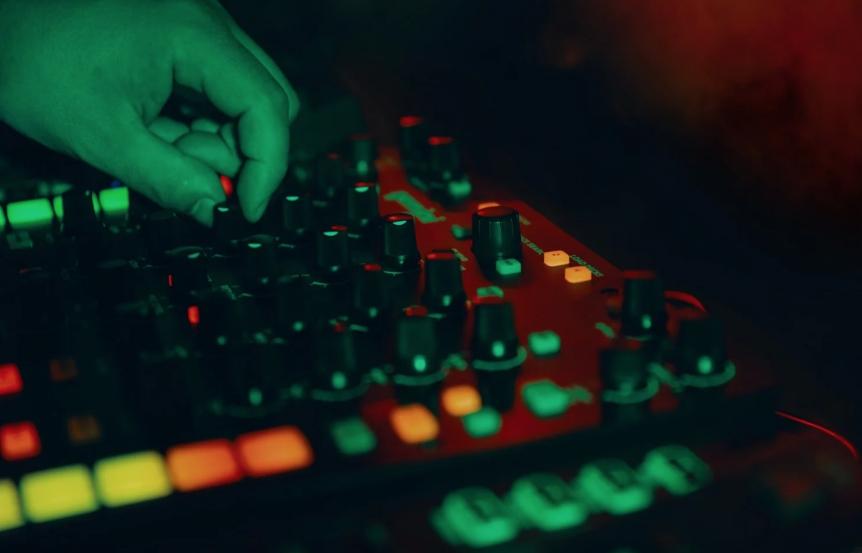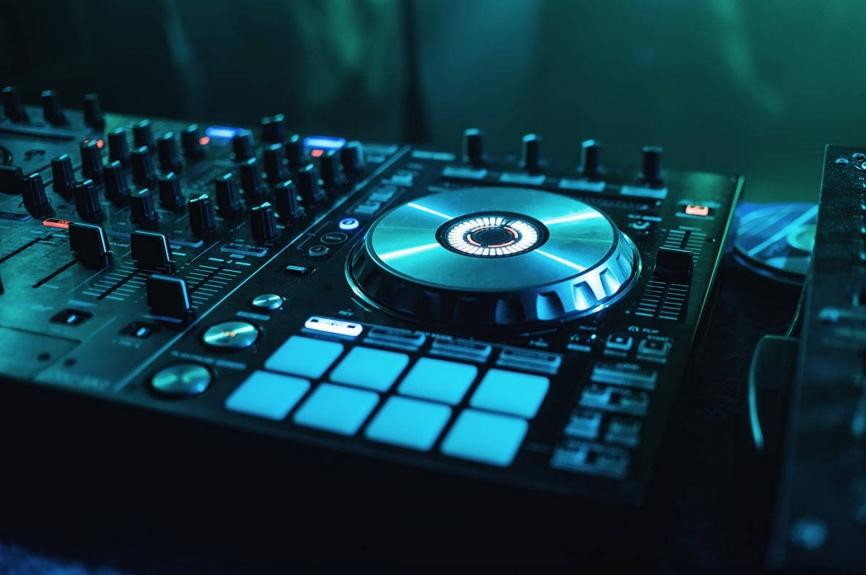DJ mixes are a fantastic avenue for showcasing your talent and musical preferences to both your audience and potential booking agents. They serve as a dynamic portfolio, displaying your musical selections and the depth of your skills. Given their influential role as a promotional tool, it’s crucial to approach them with careful planning rather than improvising on the spot. Remember, you have the luxury of time to meticulously craft and perfect your mix, ensuring it truly reflects your artistry and resonates with listeners. Let’s dive into some guidelines and tips on how to create a DJ mix that not only sounds great but also effectively represents your unique DJ persona.
How Do You Make a Good Mix?
As a seasoned DJ and mixer, I’ve often been asked about my preparation strategy for both practice sessions and live performances. Over time, I’ve honed a systematic approach to ensure each set resonates with my audience. Here’s a glimpse into my process:
1. Curating Your Playlist: The first step involves acquiring your preferred tracks. This could mean purchasing and downloading songs that resonate with your style and audience.
2. Harmonious Selection: While crafting a playlist, it’s essential to select tracks that harmonically complement each other, unless you’re aiming for a more eclectic mix.
3. Organizing the Flow: Once your tracks are selected, organize them in a progressive manner, from the more mellow tunes to the high-energy beats. This helps in creating a natural flow in your set.
4. Volume Consistency Check: Before finalizing, listen to each track carefully to ensure volume consistency. This is crucial to avoid sudden jumps or drops in sound levels during your set.
5. Determining Cue Points: Pinpoint the exact moment each track should enter. This precision in cueing ensures a seamless transition between songs.
6. Highlighting Key Moments: It’s a good practice to set hot cues for parts of each track that you particularly enjoy or anticipate will resonate with your audience.
7. Optimizing Volume Levels: Ensure your overall volume is set to the maximum level possible without causing any clipping. This guarantees a powerful sound output without distortion.
8. Trial and Experimentation: Finally, mix your set multiple times. This not only helps in memorizing the flow but also allows you to experiment with different track sequences to find the perfect harmony.
By using these steps, you can make a DJ set that shows off your skills and really gets your audience excited. Next, let’s look at some essential tips and tricks for DJs.
Phrasing
Mastering phrasing is crucial in the DJ journey, where understanding song structure becomes key. It involves timing your transitions to coincide with one segment of a tune flowing into the next. This is where counting bars and recognizing song segments help to seamlessly blend tracks. Typically, these segments are structured in sets of 4, 8, or 16 bars. At a tempo of 125 beats per minute, this translates to segments lasting approximately 15, 30, or 60 seconds.
Armed with this knowledge, you have the freedom to creatively manipulate tracks, weaving in and out of them, or highlighting certain parts while subtly blending in another tune. It’s important to ensure that the frequencies don’t overlap excessively (avoiding a cluttered sound across low, mid, and high ranges), and that the tracks harmonize well (always worth a quick pre-listen). And a little tip from my own experience: never underestimate the power of a good filter to smooth things out.

Hot Cues Setting
Incorporating cue points into your tracks is essential, regardless of the mixing software you use. Sharing a bit from my own playbook, especially with house music, I always place a marker at the very first beat. Then, I add another at the point where the initial chords begin. A final marker is set as the last chords fade out. As one song nears its concluding marker, that’s your cue to start easing in the next track from its initial marker. Ideally, by the time the outgoing track’s final chord vanishes into its outro beats, your next track should be launching into its first chord. This technique ensures a fluid handover from one song to the next. As you become more attuned to song structures, you’ll naturally identify optimal spots for additional markers, allowing for more sophisticated mixing maneuvers like loop creations.
After setting your cue points, you’re well-equipped to either meticulously plan your set or spontaneously ride the wave of the moment. Each track is primed with the ideal mix-in and mix-out points, streamlining your transitions. You have the option to curate a playlist for a pre-arranged set, or, if you’re feeling adventurous, improvise on the spot, tuning into the night’s energy. In such instances, I pay close attention to the musical key and BPM, ensuring the flow remains seamless. It’s worth noting, though, that this approach may not be suitable for every music genre.
Transitions
Typically, DJs rely on lowering faders to move from one track to another. However, a common pitfall during such transitions is muddling the vocals, which is a definite misstep. My advice? Master the art of using cross-faders in harmony with channel-faders. This technique grants enhanced control over EQ and volume levels, making transitions smoother. Also, why not spice up your sets? Integrate brief snippets or teasers from various tracks. These unexpected elements can add an exciting dynamic to your mix, keeping your audience engaged and anticipating what’s next. It’s all about balancing technique with a touch of creativity to keep the energy flowing.

Looping
Getting a grip on looping track sections can significantly enhance the continuity of your mix. Take it from my experience: if you’re dealing with an outro that’s too brief, locating and setting a loop point to elongate it can be a lifesaver. This tactic buys you ample time to seamlessly blend into the next track.
Setting up these loops can be done in advance, whether you’re prepping for a recording session or gearing up for a live gig. Once these settings are in place, they’re readily available every time you revisit that track. The effort you invest now in mastering these techniques pays off manifold in your future mixes, making each session smoother and more dynamic.
EQing
Dedicating time to master EQ skills is an essential ingredient in achieving silky-smooth transitions between tracks. Plus, it arms you with the tools to wow your audience with unexpected delights. Here’s a trick I often use: with deft EQ manipulation, you can strip the bass from one track and artfully layer in the bassline from another. This technique allows you to craft a live mashup, merging elements from different songs to create something entirely new and exciting. It’s like being a musical chef, mixing ingredients to serve up a fresh, tantalizing dish that keeps your audience guessing and grooving. This skill not only enhances your sets but also showcases your creativity, making each performance uniquely memorable.

Using Effects
Today’s DJ equipment is a treasure trove of features for tweaking tracks, offering everything from extra effects and filters to loops. But, from my own experience, adding these elements isn’t always necessary, especially with well-known tracks, where too much tampering might not sit well with the audience. These tools, however, are fantastic for injecting new life into your mixes when used with finesse.
The art of DJing is about using what’s available to express your unique style and enhance the rhythm of your set. Overuse of effects is a common pitfall that can lead to a cluttered mix. It’s essential to understand and master these effects deeply. When used judiciously, they become a subtle yet powerful part of your mixing arsenal, ensuring your sets are both polished and engaging.
To Dos to Make a Top DJ Mix
Deeply understanding your tracks is key before you start recording. This knowledge eases the process, as you know what’s coming next in each track. You’ll be able to pinpoint the ideal moments for blending and transitioning between songs. I personally like to immerse myself in my playlist, playing it repeatedly on my phone.
Here are some hints:
- Passion Over Profit: Focus on DJing for the sheer love of it. If you’re in it just for financial gains, you’ll find your enthusiasm waning.
- Take Notes: During practice sessions, jot down any track combinations that really click. These are your go-to mixes for future sessions, ensuring smooth, hassle-free performances.
- Mood Matters: Always have a clear idea of the mood you want to set with your mix. This makes it easier to select tracks that complement each other.
- Practice Makes Perfect: Never underestimate the power of practice. It’s the secret to making these skills second nature.
- Record and Reflect: Recording your practice sessions is invaluable. Listening back helps you recognize your strengths and areas for improvement, speeding up your growth as a DJ.
Remember, the journey to becoming a proficient DJ is as much about the heart as it is about the technical skills.
Final Thoughts
Creating engaging DJ mixes is all about consistency in production and sharing. This routine not only sharpens your skills but also lets you gather real-world feedback on what your audience loves and reacts to. As you continue, making a DJ mix becomes second nature, almost effortless.
Your mixes are a window into your unique style and musical taste, offering your audience a personal connection with you. It’s crucial to invest time in creating something you’re genuinely proud of and enjoy. These creations could be shared and cherished for years, making them a lasting representation of you at this moment. As your skills and tastes evolve, these mixes will stand as markers of your artistic journey, a testament to where you were and how far you’ve come.


